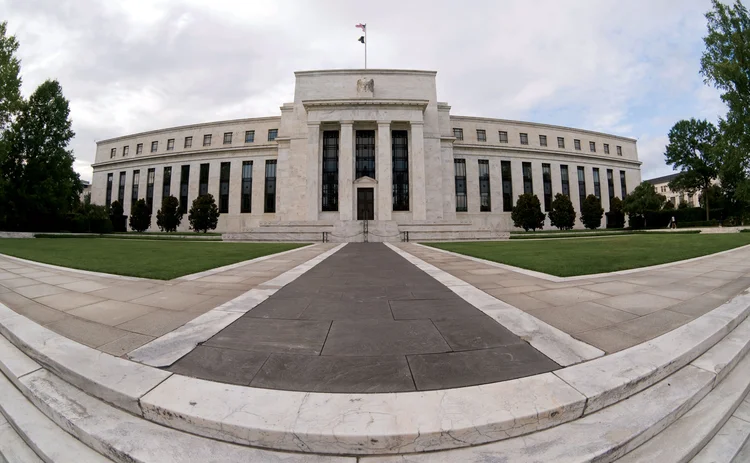Running the numbers on Barr’s Basel III endgame revisions
Fed vice-chair’s plan to ease capital requirements for big banks still lacks critical details

The numbers were certainly attention-grabbing. On September 10, US Federal Reserve vice-chairman Michael Barr pledged wide-ranging changes to the Basel III endgame proposal released in July 2023, which he claimed would curb the overall capital increase for the largest banks from 19% to just 9%.
Do those numbers add up?
Banks will find out when the Fed releases the full details of the revised package, which Barr indicated would happen very shortly. In the meantime, the original proposal from 2023 offers some clues about how the changes will stack up.
The Fed projected capital requirements for credit and operational risk would potentially fall under the original proposal, especially for banks currently bound by the US standardised approach known as the Collins floor. The 19% jump in overall capital requirements was largely driven by new charges for credit valuation adjustments (CVA) and the introduction of market risk rules, known as the Fundamental Review of the Trading Book (FRTB).
The capital surcharge for at least some of the eight US global systemically important banks (G-Sibs) was also expected to increase by up to 40 basis points, equivalent to a 2% to 4% rise in overall requirements.
The changes to the G-Sib surcharge proposal previewed by Barr on September 10 could therefore be significant. Regulators are expected to drop plans to include certain client clearing exposures in the calculation, which will come as a relief to banks with large derivatives clearing operations.
More importantly, Barr has promised to change the way the G-Sib surcharge is calculated to account for inflation and economic growth. The Basel version of the capital add-on is calculated on a relative basis: if a bank becomes larger relative to the rest of the sector, it is deemed more systemic and its surcharge will rise. The US uses a different methodology, which works on an absolute basis. Consequently, US G-Sibs face higher surcharges automatically as the economy grows and exposures rise.
Recalibrating the surcharge to offset this effect could be a big win for the G-Sibs. However, the extent of the relief will depend on the base year used by the regulator to make the initial calculation, and the frequency with which the Fed will update the calibration in the future.
In practice, though, the introduction of the FRTB always represented the sharpest rise in capital requirements in percentage terms. And this is where Barr’s promise of a softer approach is hardest to assess.
The capital impact of the new market risk rules largely comes down to whether or not banks adopt the internal models approach (IMA). In jurisdictions that have already finalised their FRTB rules, IMA adoption has been lacklustre to say the least. Barr is clearly aware of that, and signalled measures designed to make it easier for banks to deploy the IMA.
These include a “multi-year implementation period” for the profit and loss attribution test, which determines whether trading desks will receive approval to use the IMA. US banks will certainly appreciate the extra time to prepare for the IMA approval process. But banks in other jurisdictions have also been deterred from adopting the IMA by the extra capital charges imposed on non-modellable risk factors (NMRFs). Although Barr didn’t mention this explicitly, he did refer to “a few additional adjustments” to incentivise the use of IMA. In any case, a longer implementation period will also give banks more time to gather the data they need to prove risk factors can be modelled and reduce the capital hit from NMRFs.
Still, the effectiveness of these measures in encouraging IMA uptake is currently unknowable. If the Fed’s assumptions about greater IMA adoption prove to be optimistic, the eventual capital increase for G-Sibs could end up being higher than Barr suggested in his speech.
Moreover, Barr’s newfound enthusiasm for the IMA for market risk raises further questions about why US regulators decided to abolish internal models for credit risk, in a major deviation from the Basel standards. Risk managers have long warned this would disincentivise investments in enhancing credit risk modelling, but Barr offered no indication the Fed would reverse course.
The heavy criticism of the original Basel III endgame proposal left Barr with little choice but to revise his plans. His promise to slash the capital increase for the largest banks has quietened the critics – for now. But as always with bank capital rules, the devil will be in the details.
This article was originally published by sister title Risk.net.
Only users who have a paid subscription or are part of a corporate subscription are able to print or copy content.
To access these options, along with all other subscription benefits, please contact info@centralbanking.com or view our subscription options here: http://subscriptions.centralbanking.com/subscribe
You are currently unable to print this content. Please contact info@centralbanking.com to find out more.
You are currently unable to copy this content. Please contact info@centralbanking.com to find out more.
Copyright Infopro Digital Limited. All rights reserved.
As outlined in our terms and conditions, https://www.infopro-digital.com/terms-and-conditions/subscriptions/ (point 2.4), printing is limited to a single copy.
If you would like to purchase additional rights please email info@centralbanking.com
Copyright Infopro Digital Limited. All rights reserved.
You may share this content using our article tools. As outlined in our terms and conditions, https://www.infopro-digital.com/terms-and-conditions/subscriptions/ (clause 2.4), an Authorised User may only make one copy of the materials for their own personal use. You must also comply with the restrictions in clause 2.5.
If you would like to purchase additional rights please email info@centralbanking.com








